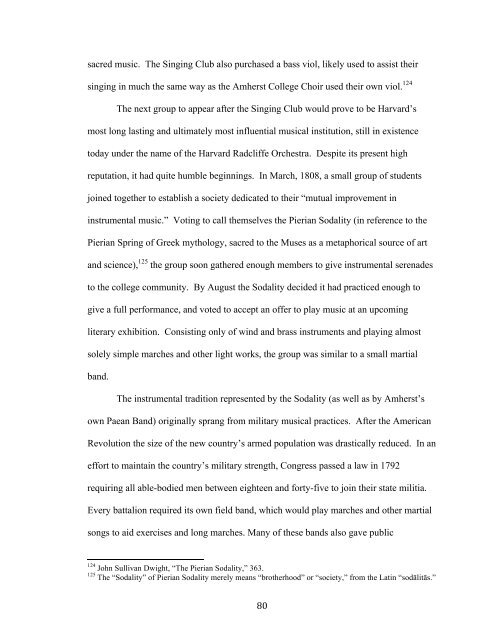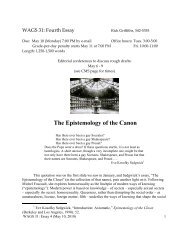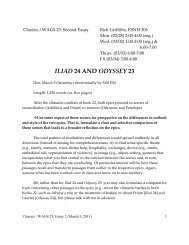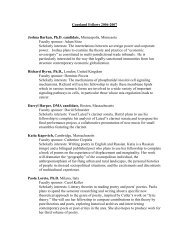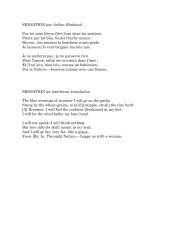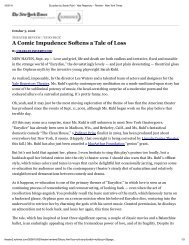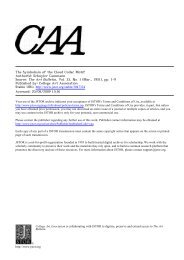Finding Their Voices - Amherst College
Finding Their Voices - Amherst College
Finding Their Voices - Amherst College
You also want an ePaper? Increase the reach of your titles
YUMPU automatically turns print PDFs into web optimized ePapers that Google loves.
sacred music. The Singing Club also purchased a bass viol, likely used to assist their<br />
singing in much the same way as the <strong>Amherst</strong> <strong>College</strong> Choir used their own viol. 124<br />
The next group to appear after the Singing Club would prove to be Harvard’s<br />
most long lasting and ultimately most influential musical institution, still in existence<br />
today under the name of the Harvard Radcliffe Orchestra. Despite its present high<br />
reputation, it had quite humble beginnings. In March, 1808, a small group of students<br />
joined together to establish a society dedicated to their “mutual improvement in<br />
instrumental music.” Voting to call themselves the Pierian Sodality (in reference to the<br />
Pierian Spring of Greek mythology, sacred to the Muses as a metaphorical source of art<br />
and science), 125 the group soon gathered enough members to give instrumental serenades<br />
to the college community. By August the Sodality decided it had practiced enough to<br />
give a full performance, and voted to accept an offer to play music at an upcoming<br />
literary exhibition. Consisting only of wind and brass instruments and playing almost<br />
solely simple marches and other light works, the group was similar to a small martial<br />
band.<br />
The instrumental tradition represented by the Sodality (as well as by <strong>Amherst</strong>’s<br />
own Paean Band) originally sprang from military musical practices. After the American<br />
Revolution the size of the new country’s armed population was drastically reduced. In an<br />
effort to maintain the country’s military strength, Congress passed a law in 1792<br />
requiring all able-bodied men between eighteen and forty-five to join their state militia.<br />
Every battalion required its own field band, which would play marches and other martial<br />
songs to aid exercises and long marches. Many of these bands also gave public<br />
!!!!!!!!!!!!!!!!!!!!!!!!!!!!!!!!!!!!!!!!!!!!!!!!!!!!!!!!<br />
124 John Sullivan Dwight, “The Pierian Sodality,” 363.<br />
125 The “Sodality” of Pierian Sodality merely means “brotherhood” or “society,” from the Latin “sodālitās.”<br />
! 80!


